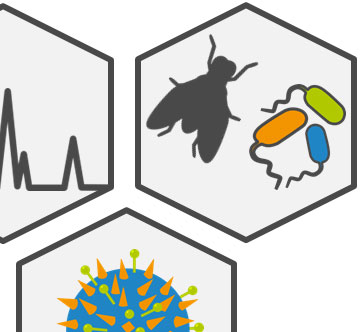Motivation and Problem
Influenza viruses of genera A and B usually cause uncomplicated febrile infections of the upper respiratory tract with respiratory symptoms in healthy individuals. In the case of severe courses, however, complications can occur, such as the development of primary influenza pneumonia or secondary bacterial infections, which can lead to the death of the patient. On average, about 1000 people die of influenza infection in Germany each year. In Germany, two drug classes are approved for the treatment of influenza: M2 ion channel blockers and neuraminidase inhibitors. However, the great genetic flexibility of the viruses means that there is a risk of rapid development of resistance. Because of the high prevalence of resistance in currently circulating influenza viruses, M2 ion channel blockers are no longer recommended for antiviral treatment. Neuraminidase inhibitors are therefore used almost exclusively. But even for this class of drugs, numerous cases of resistance have already been described. In 2009, over 90% of seasonally circulating H1N1 influenza viruses were resistant to oseltamivir. In addition to rising resistance, the emergence of a novel pandemic virus also poses a major threat.
 Fraunhofer Institute for Molecular Biology and Applied Ecology IME
Fraunhofer Institute for Molecular Biology and Applied Ecology IME


